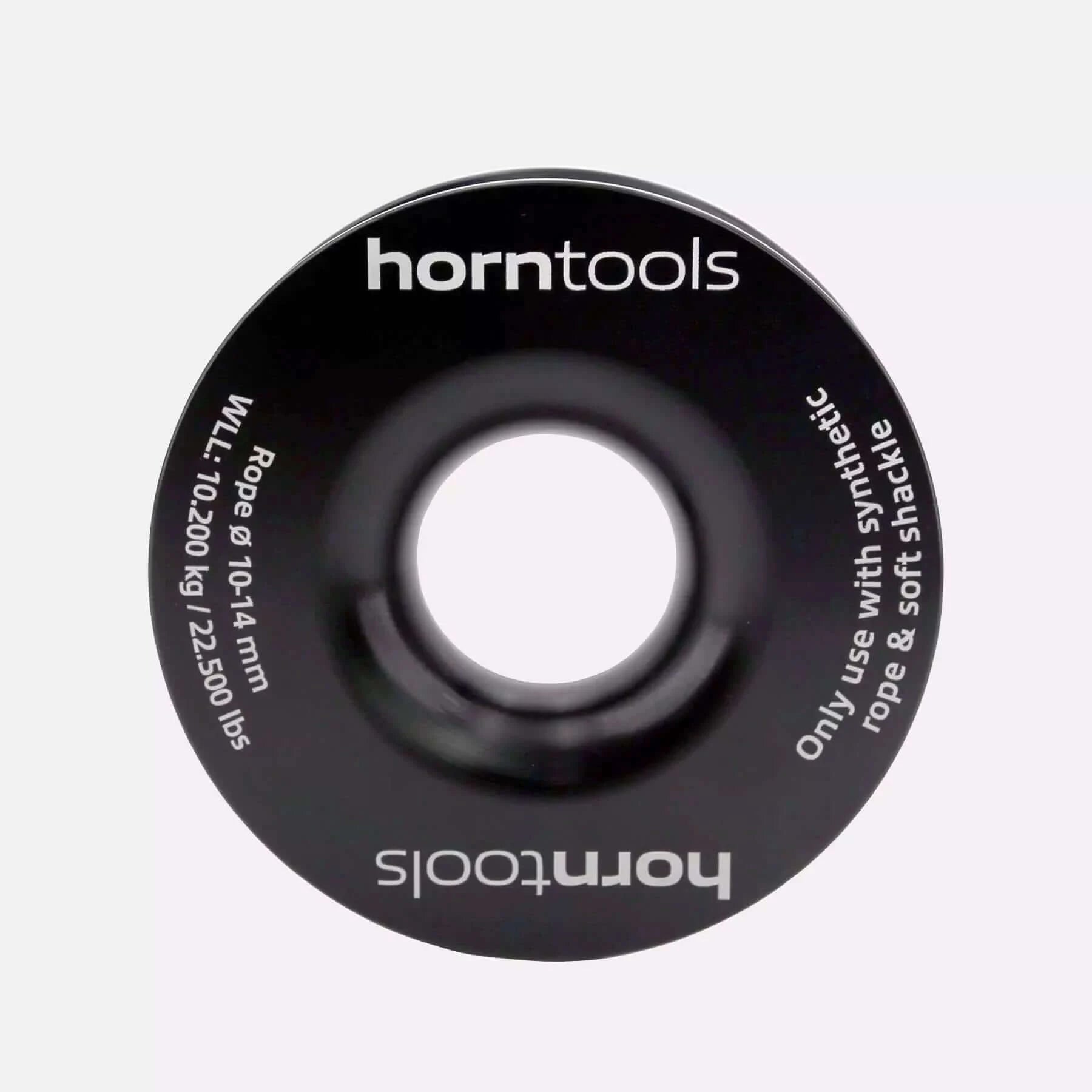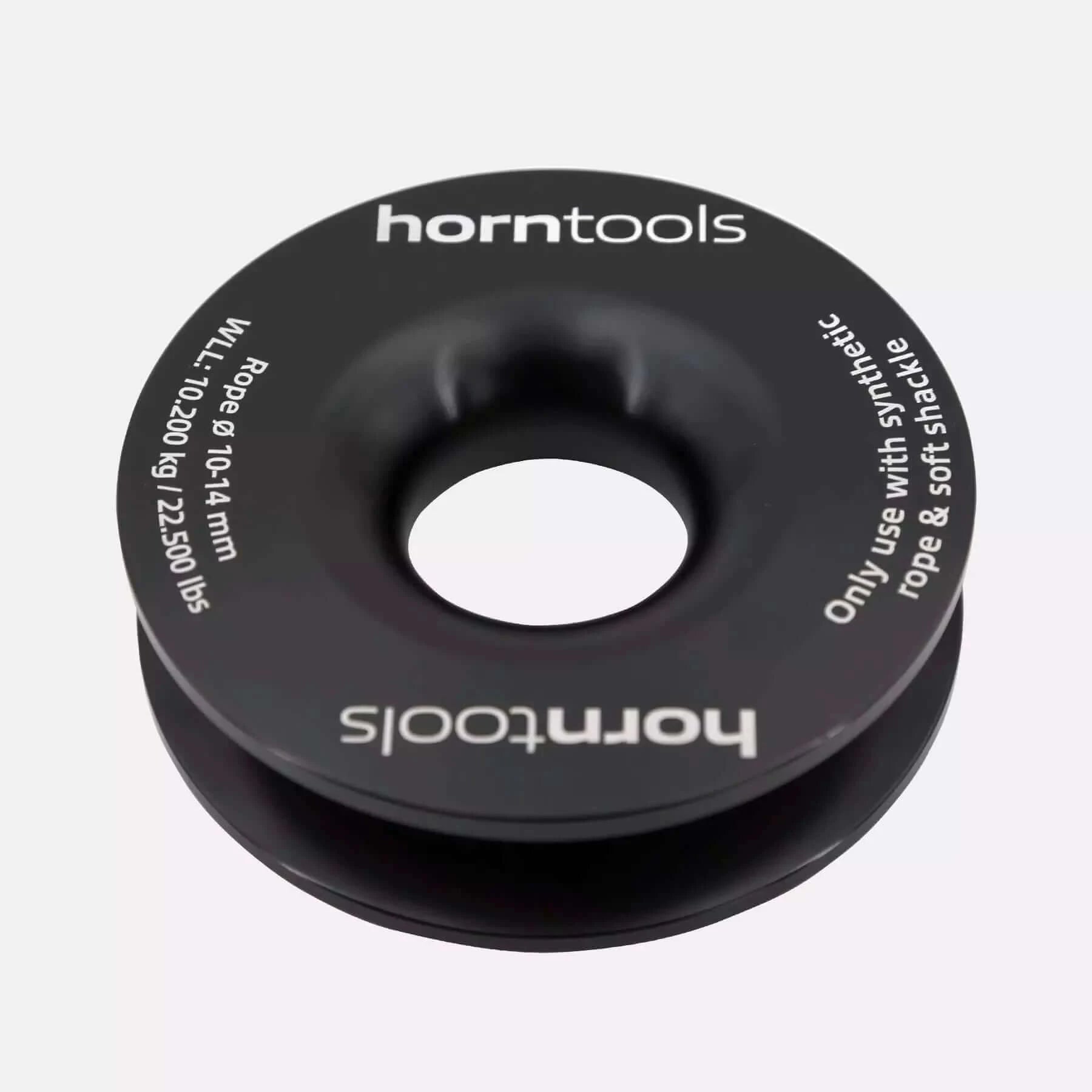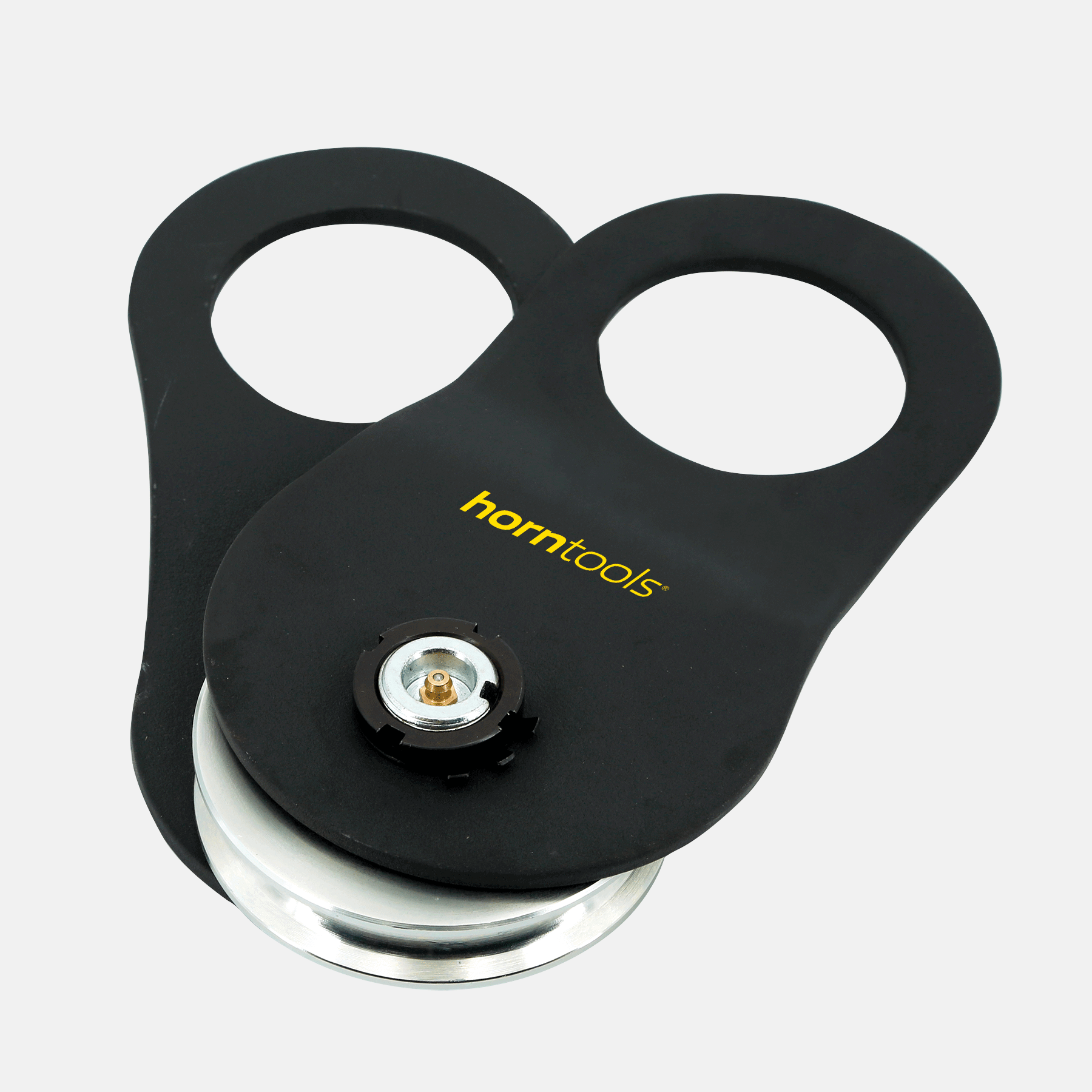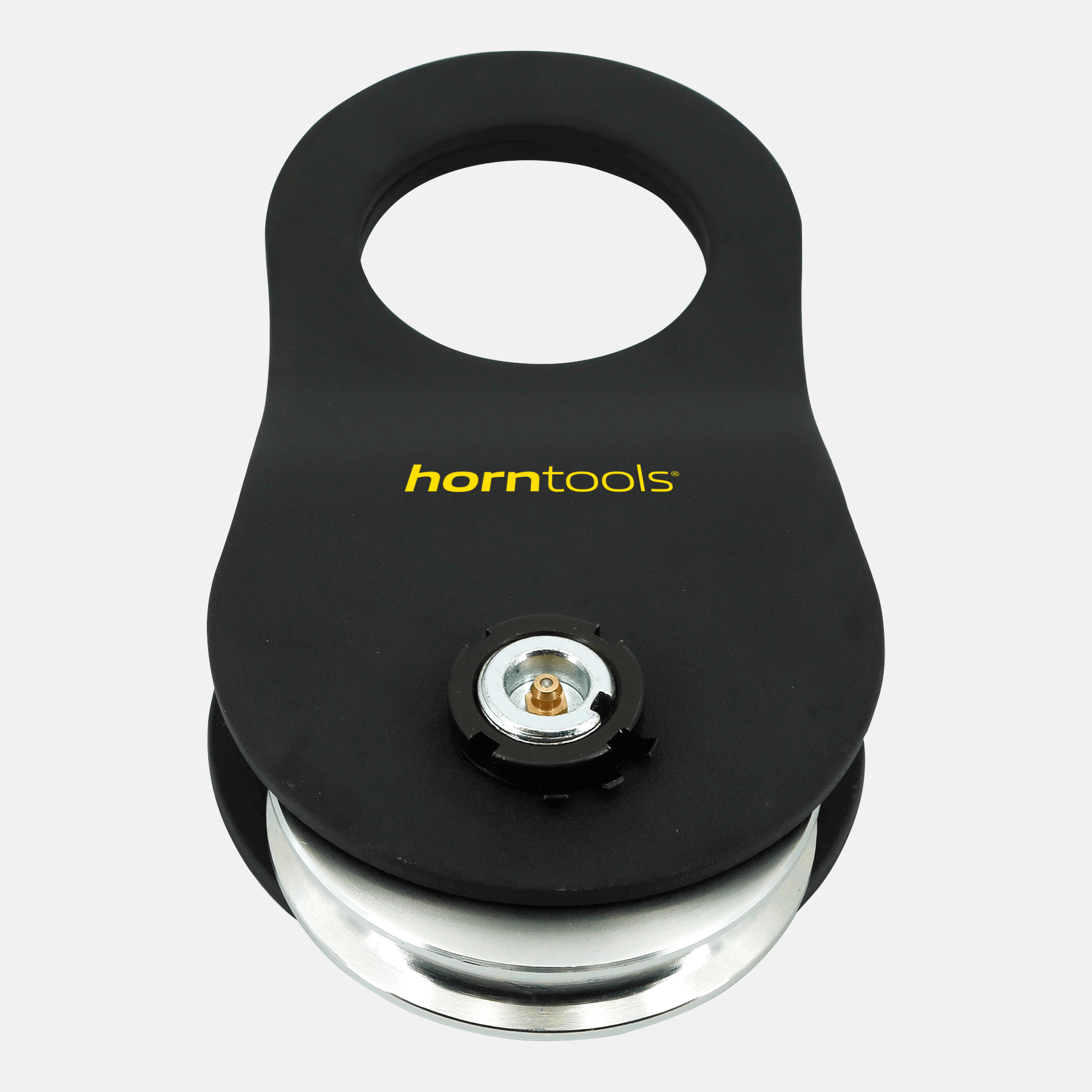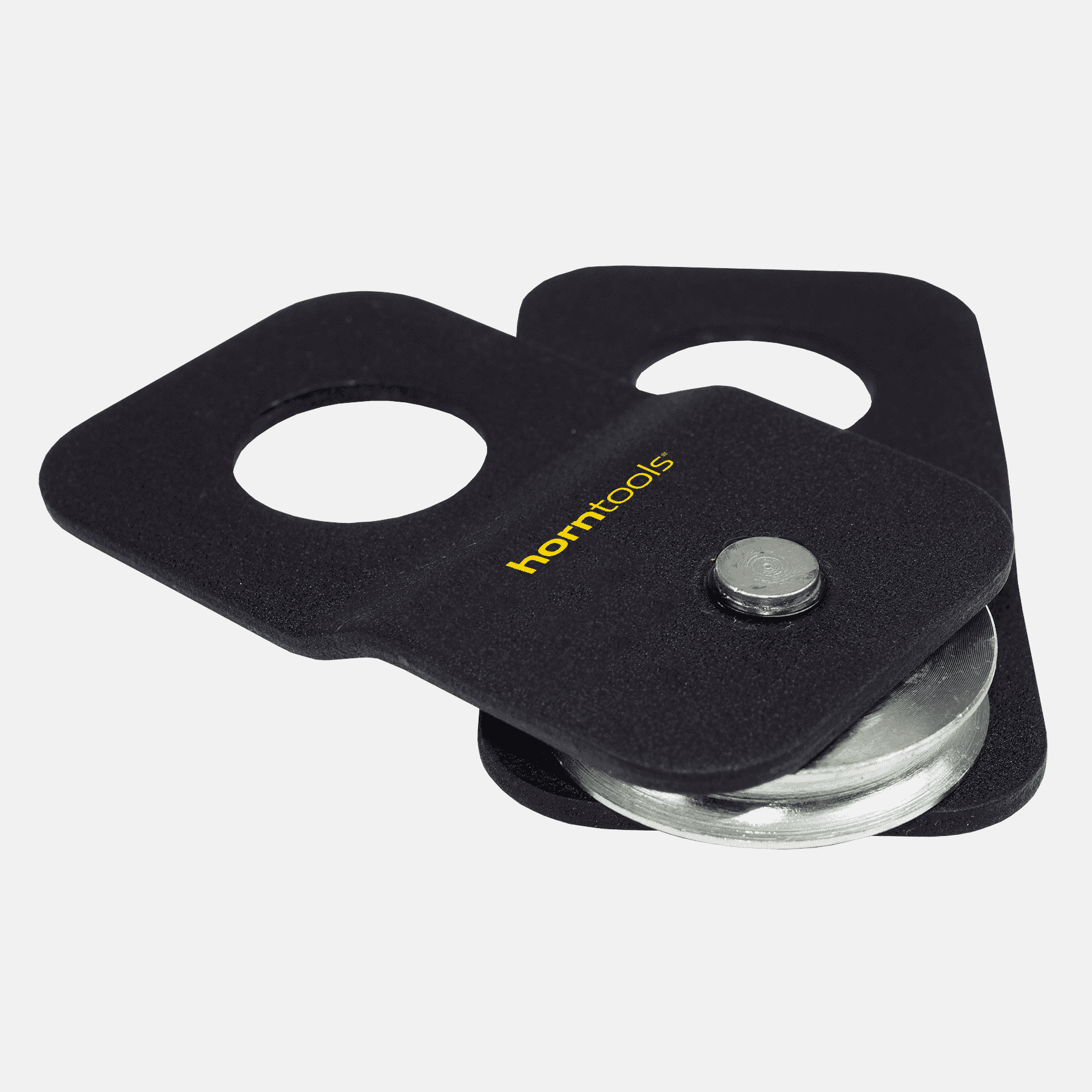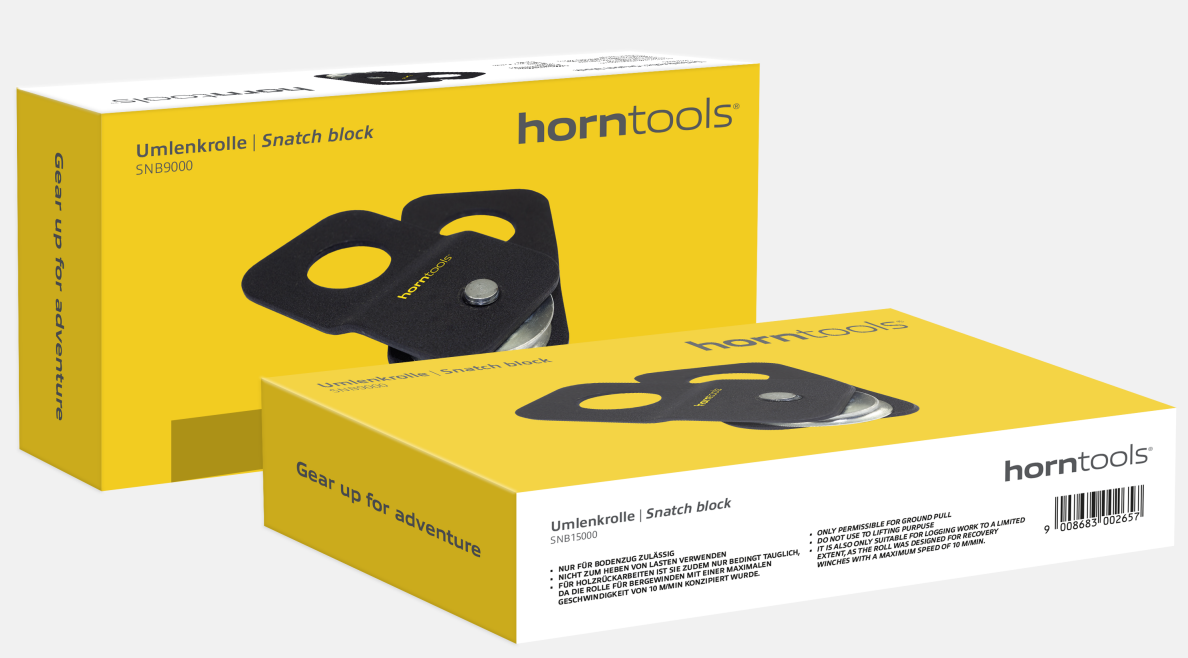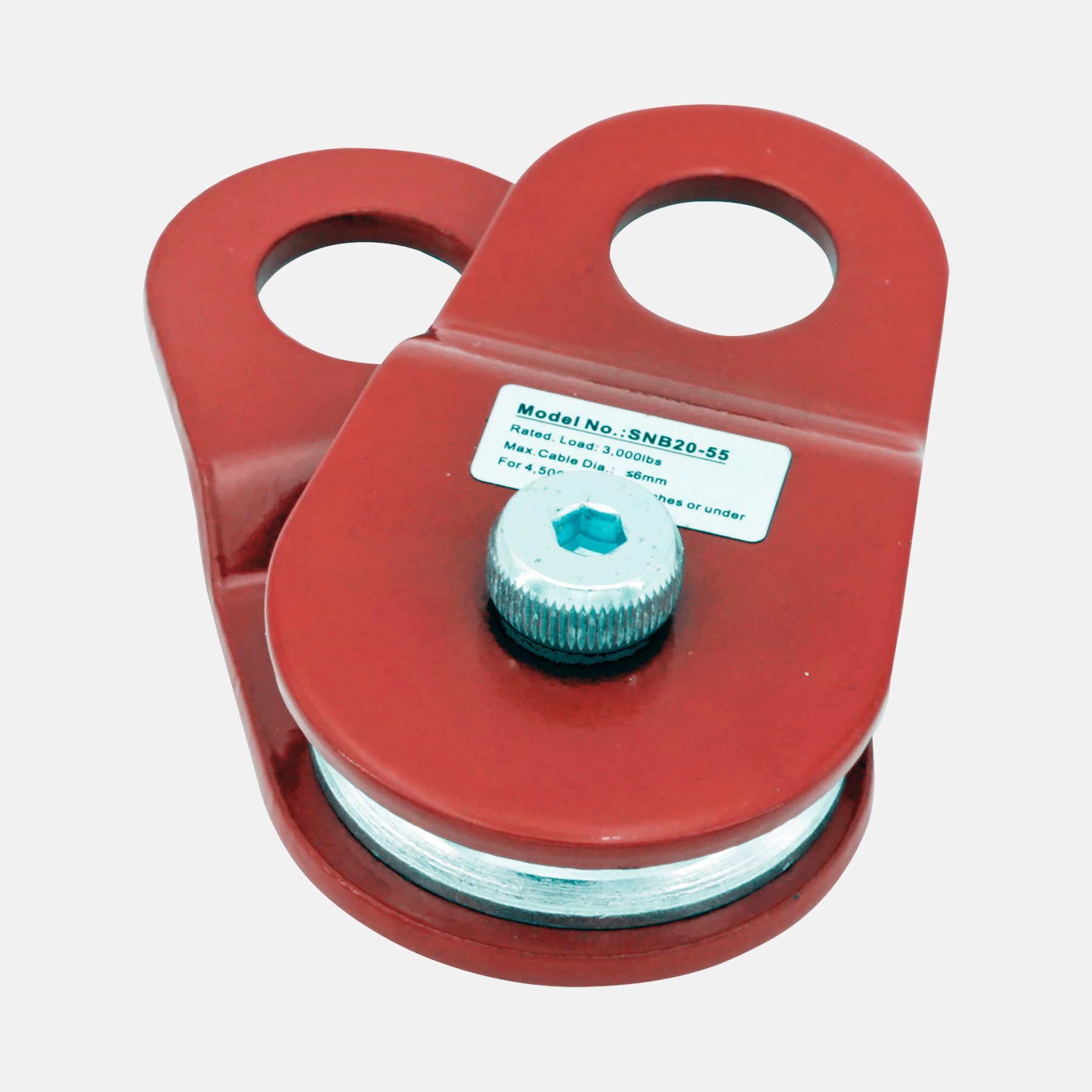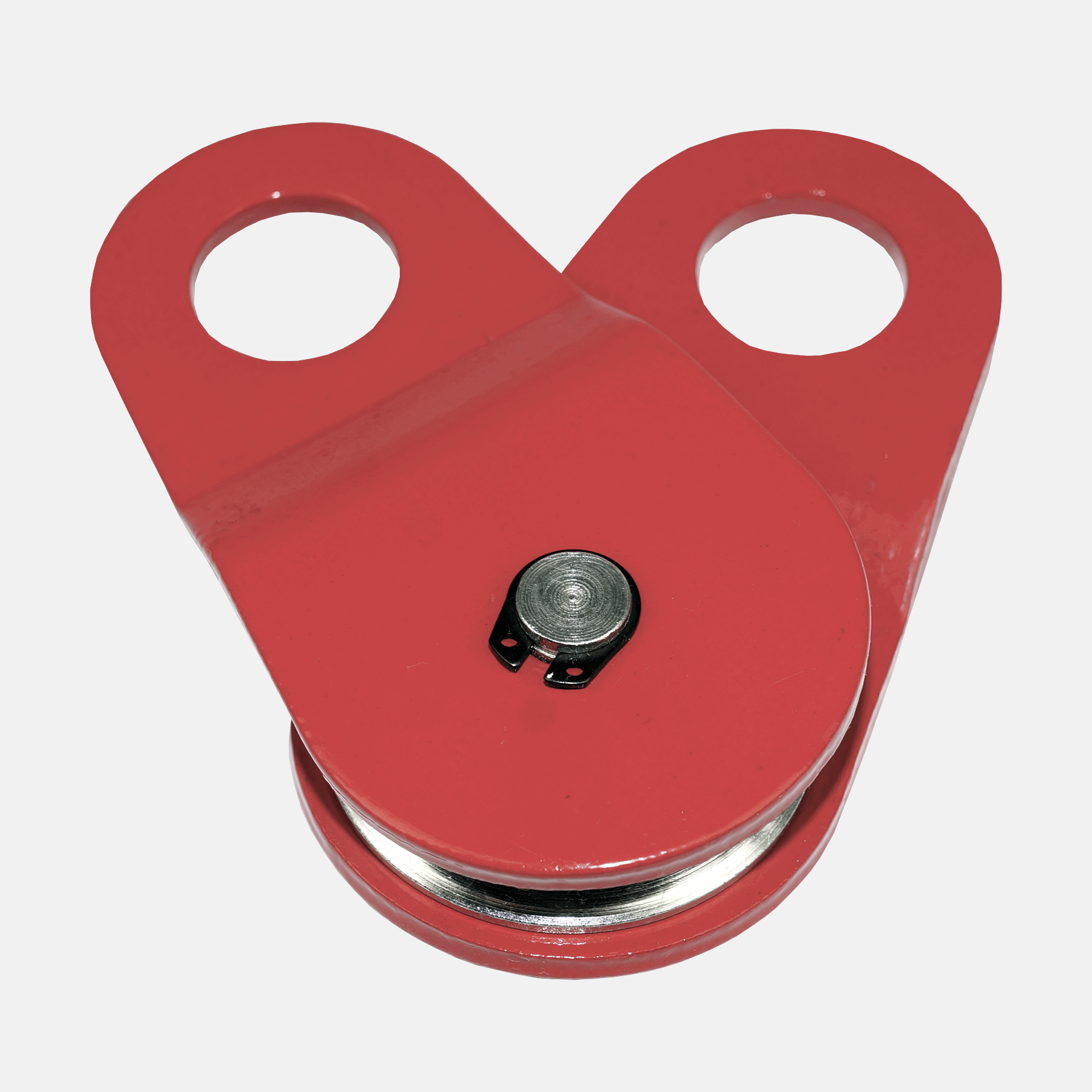Winch Rings
The pulleys from horntools are lightweight, robust and, depending on the model, suitable for steel and synthetic ropes. Designed for a payload of 2 to 10 tons, they are ideal for use with cable winches and for cable recovery.
FAQ Idlers
How does a deflection pulley work on a cable winch?
A deflection pulley is used with a Cable winch used to optimize the increase the traction of these and the Change the direction of the rope. In this Video we show you the various applications of the deflection pulley in practice. With the help of a deflection pulley, the Effective tensile force doubled as it acts as a mechanical lever. This allows heavier loads with less effort can be moved. The deflection pulley also plays an important role in rope pulling by guiding the rope around obstacles and flexibly adjusting the pulling direction. This is particularly useful for self-recovery of vehicles, where a idler pulley is used to guide your car from tricky situations with the help of a cable winch. The deflection pulley is generally used for use with the electric cable winch (in forestry) or for recovering cars, off-road vehicles or off-road vehicles for towing or self-recovery.
Which pulley for which cable winch?
Choosing the right pulley depends on the type of cable winch and the specific application. Pulleys are available in various sizes and load capacities and are suitable for wire ropes, steel cables and/or synthetic ropes, depending on the model. The following criteria are important:
- Resilience: Make sure that the deflection pulley for the maximum pulling force of your cable winch to avoid breakages and dangerous situations. There are special forestry pulleys for specific applications, e.g. in the forestry sector.
- Size and weight: The dimension of the idler pulley should match the Diameter of the rope fit. A pulley that is too small can damage the rope, while one that is too large can be unnecessarily heavy.
- Material: Idlers are made from different materials such as steel, aluminum or plastic. Steel castors are particularly robust and durable, aluminum castors are lighter and corrosion-resistant, while plastic castors are the lightest, but offer less load-bearing capacity than metal castors.
How do you use a pulley?
To use a pulley, follow these steps:
- Preparation: Secure the pulley to a stable attachment point that can bear the load. Use a suitable Soft shackle or a comparable connection.
- Inserting the rope: Guide the rope through the pulley so that the direction of pull is effectively changed. Make sure that the rope is threaded correctly to avoid friction and damage.
- Application: Operate the cable winch to move the load. The pulley distributes the pulling force and makes it possible to move heavier loads with less effort.
⚠️ Before each use, check the pulley or soft shackle for visible cracks, signs of wear and, if necessary, mobility.
How do you attach a pulley?
An idler pulley is typically secured with a suitable attachment point that can safely absorb the tensile forces. Here it is important to use a Soft shackle or a similar secure connection to attach the pulley either to the anchor point or directly to the load. This method minimizes the risk of damage to the rope and ensures safe and effective use of the pulley.
What force acts on the deflection pulley? How strong must a deflection pulley be?
With the deflection pulley, you must Take breaking load and payload into account. The breaking load of a deflection pulley indicates which maximum load it can withstandbefore it breaks or fails. An idler pulley with a breaking load of 9 tons can hold loads of up to 9,000 kilograms.
However, the recommended working load is lower than the breaking load. The working load limit (WLL) takes into account a Safety factorwhich is usually between 4:1 and 5:1. Therefore, an idler pulley with a breaking load of 9 tons typically has a working load limit of around 1.8 to 2.25 tons, depending on the safety factor applied.
How strong the idler pulley needs to be depends entirely on the specific application and the maximum pulling force of the cable winch off. It is crucial that the deflection pulley is both the Breaking load as well as the Recommended working load limit (WLL) to ensure reliable and safe use.
Do you use a pulley with plastic rope or steel cable?
The choice between a Plastic rope and a steel cable is an issue for many winch users. Both options have their advantages and disadvantages. While plastic ropes lighter, more flexible and safer are more expensive to handle and can be damaged by UV radiation. Steel cables, on the other hand, have a high tractive force and are more cost-effective. However, they tend to rust and can pose a risk of injury due to their sharp edges.
More on the subject of synthetic rope or steel cable and Which ropes the horntools deflection pulleys are suitable foryou will find here in this blog post about deflection pulleys.
Developed in Austria
All of our products are developed and tested by us in Austria.
5 year guarantee
We voluntarily give a 5-year guarantee on all of our products.
Free advice
Call us or write to us. We are always there for you.
